Soundkaos 40 loudspeakers
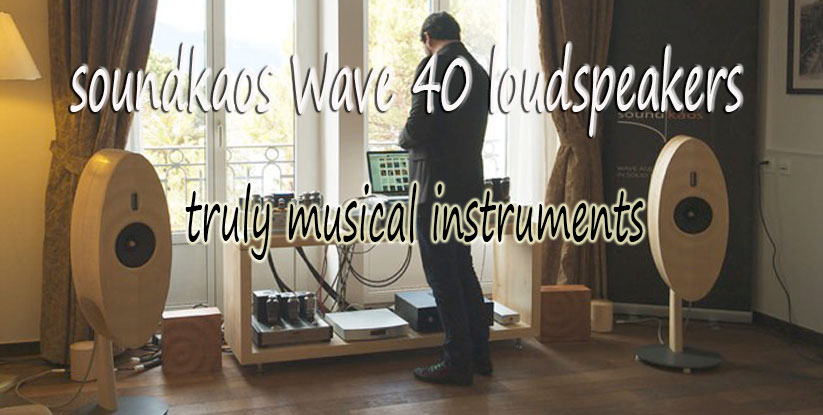

 They say good things come in small packages… the soundkaos Wave 40’s arrived in one huge box! I mean huge. Based on the size of that crate, I expected heavy speakers and was stunned to find them to be extremely light. The box was delivered by Walter Swanbon from Fidelis Music Systems (fidelisav.com) and they were kind enough set up the speakers for me after we all had lunch at a new local bistro.
They say good things come in small packages… the soundkaos Wave 40’s arrived in one huge box! I mean huge. Based on the size of that crate, I expected heavy speakers and was stunned to find them to be extremely light. The box was delivered by Walter Swanbon from Fidelis Music Systems (fidelisav.com) and they were kind enough set up the speakers for me after we all had lunch at a new local bistro.
Most speaker manufacturers deal with cabinet vibration by using mass to mitigate internal vibrations, which often results in the use of complicated construction techniques and very heavy enclosures. We audiophiles are often lovers of equipment as well and often perceive a product of hefty weight as better, so seeing the soundkaos Wave 40’s for the first time was confusing, as their construction appeared to fly in the face of conventional thought. This speaker’s unique design, construction and presentation quickly aroused my curiosity and, as a result, my expectations ran sky high. I found a good amount of information on the soundkaos website describing the design and manufacturing processes and other sources provided substance. I find it somewhat rare for a designer to be so verbose and descriptive regarding his product so I’ve chosen to include quotes when possible. I personally found this content illuminating and hope you do as well.
Soundkaos Wave 40 speakers are made in Switzerland. Martin Gateley, the Wave 40’s designer, built “the Wave 40 entirely from solid wood, stating “this was a conscious decision right from the conceptual stage as I was interested in what a instrument type build would bring to the table. I did a lot of research on instrument building as it was all new territory to me and I took a lot on board whilst designing the enclosure. I had considered a ply/laminating oval structure for the side shape which would have been more economically from a build point of view but there where 2 main reasons I opted for a steam bent solid wood option. With ply/layered constructions you get layer damping which stores energy much longer then the open cell structure of wood. The 2nd reason is that with steam bending the timber becomes much more stable after drying as the hemicellulose is largely destroyed due to the heat of the steam. Hemicellulose is the component in wood that is regulates moisture content. When it is destroyed it can’t take up or release any moisture and with that the formed timber stays in the same shape and is not affected by humidity.”
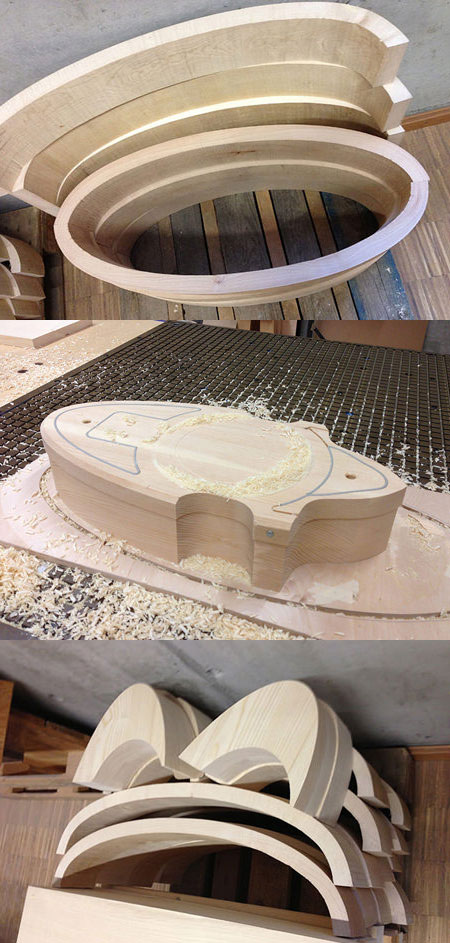 Each Wave 40 is distinguished with a delicately rippling wave pattern crafted into it’s solid spruce tone wood front. There is a beautifully sculpted transmission line port on the inside wall of each speaker and a single Enviee 8 inch wide bandwidth driver in each cabinet. Gateley told me he searched for a long time to find a right full range driver for the job, hoping to avoid the addition of a tweeter but, once the driver was in the enclosure he found it didn’t have enough treble energy and prompted another choice – to gently roll off the Enviee’s high frequencies at the point Gateley, the designer, considered a ‘hot zone’ for this widebander. ’The hot zone on the full range as we call it comes in around 8-9 kHz where it gets a bit aggressive and shrill. ‘It was just to edgy for me and felt uncomfortable. By gently rolling it of at 7kHz we avoid a lot of that.’
Each Wave 40 is distinguished with a delicately rippling wave pattern crafted into it’s solid spruce tone wood front. There is a beautifully sculpted transmission line port on the inside wall of each speaker and a single Enviee 8 inch wide bandwidth driver in each cabinet. Gateley told me he searched for a long time to find a right full range driver for the job, hoping to avoid the addition of a tweeter but, once the driver was in the enclosure he found it didn’t have enough treble energy and prompted another choice – to gently roll off the Enviee’s high frequencies at the point Gateley, the designer, considered a ‘hot zone’ for this widebander. ’The hot zone on the full range as we call it comes in around 8-9 kHz where it gets a bit aggressive and shrill. ‘It was just to edgy for me and felt uncomfortable. By gently rolling it of at 7kHz we avoid a lot of that.’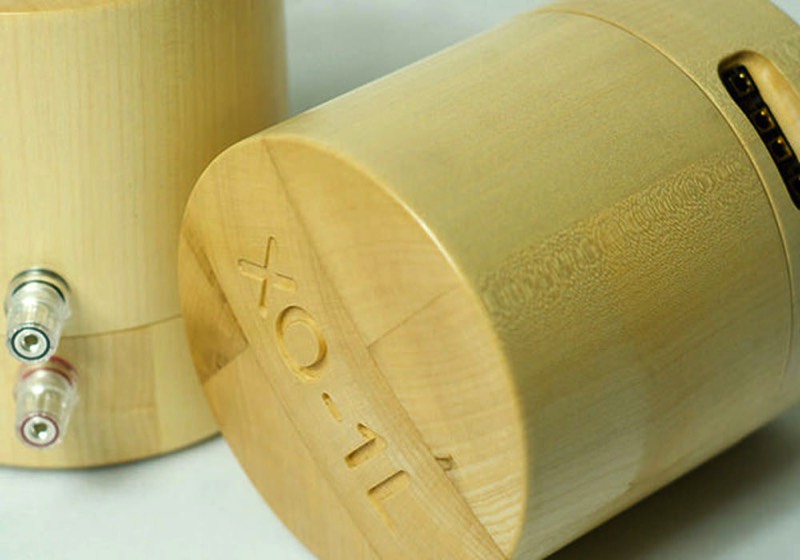
The Raal ribbon tweeter was chosen to handle the higher frequency duties, mounting it behind a slot above the Enviee driver. A stylish wooden whizzer cone adorns the Envee’s center while an external crossover sits on the floor alongside each speaker, connected via umbilical and housed in a attractive maple cylinder with an open slot for binding posts access. Each driver’s magnet mount to a wooden cylinder and that bolts to a single vertical solid wood support resembling a rifle stock which then mounts to a heavy circular metal base. The bases have dense fiber pads, forgoing our industry’s usual spikes. The vertical brace fully supports both the driver and the speaker. Accordingly, this achieves two contradictory goals: 1) the deliberately low mass baffle reacts just like a guitar top while 2) the driver anchors firmly to the stand, grounded to the floor with the high-mass metal base. In this way the designer can use a thin resonant baffle with a firmly stabilized driver.
The Wave 40’s I reviewed were of all wood construction, with an instrument grade solid spruce front and back sandwiching a maple body and nicely presented in a shellac finish. The Wave 400 is also available in both solid cherry and walnut. I have personally refinished 1950’s furniture and know the time a good shellac finish takes. It’s a beautiful, time-consuming and delicate process. These speakers are very pretty. Martin told me that some aspects of the soundkaos current models have changed compared to the ones I reviewed here, as they now offer a 2-pack acrylic finish which Gateley says ‘has firmed up the sound and it has made it more solid. The shellac finish which you have was also very time consuming to do.
Being a guitar player, I’m familiar with the use of tone wood for sounding boards and I appreciate the differences in the various of tone woods that luthiers use to build stringed instruments. All my guitars have spruce tops, so I have experience with how spruce performs. Spruce is known for providing a relatively large dynamic range as it resonates, yielding a strong fundamental tone with fewer overtones while maintaining clarity and forgoing complexity when vibrated with greater dynamic content. Gateley: ‘Much like guitars and violins I opted for spruce for the front baffle and back due to its ability to shed energy fast. The spruce we use is instrument grade and comes from higher altitudes as it grows much slower and the proportion of early (spring) and late wood (summer, autumn) is closer to 50/50% which give it more elasticity which is better for shedding energy. Faster growing spruce (from lower altitudes) is more like 25/75%, which you can see from the year rings. Of course as you correctly identified this all adds up to a complex build and is therefore very costly but I do think it is a major contributor to the sound quality.’ From the soundkaos site,” As would be the case for a guitar or cello, our side walls are composed of denser thicker wood species like Maple, Cherry or Walnut. This creates the necessary structural integrity. Meanwhile the sound activated thinner surfaces face the listener and room’s front wall. These larger oscillating surfaces then become directional contributors to the speaker’s acoustic energy transmission.’
Expanding on the virtues of solid wood construction, the soundkaos site: ‘the microscopic structure of wood it is a bit like Swiss cheese, full of holes. These tubular cells have an amazing ability to absorb and dissipate mechanical vibrations.’ The irregularity of wood’s cell structure, ‘can cover a much wider area of the bandwidth’ than the regular cell structure of a man made product and ‘the elasticity of natural wood, vibration absorption/damping is much more effective when the material modulates with the vibration’ according to the speaker’s site. A properly sculpted solid tone wood top on a musical instrument will be more responsive to string vibrations and resonate more freely than a will a cheaper laminated top. Solid wood instruments project further and with greater body and often are described as having a warmer sound, so I was anxious to hear what tone wood might do for a speaker.
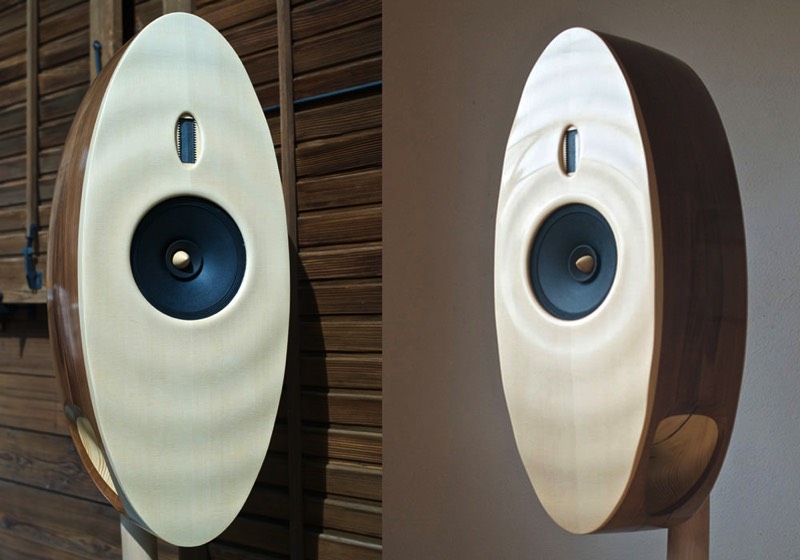
The designer wanted the entire enclosure to act as one constant energy-shedding mechanism. If it’s moving, it’s dissipating energy. A sealed alignment would trap internal energies and build up very high box pressure. Gateley: ‘We also don’t use an otherwise ubiquitous port because its endemic ringing ruins both the impulse response and time-domain behavior. Our chosen solution is a very short flared line instead. It lets the driver breathe freely. It doesn’t resist the rear wave yet augments the low-frequency reach to what is an impressive 55Hz for our small cubic volume. This also isn’t a ‘brute force’ alignment which attempts to take a driver lower than it comfortably goes. For that we deliberately offer our Sub Wave D12 companion.’ While the Wave 40’s provided ample realistic bass to my ear, the Sub Wave can flesh out the deepest bottom end. The Sub Wave was not reviewed here.
The speaker has a beautifully carved interior and the speaker body’s two halves lined with Aramid honeycomb and joined by four invisible bolts. As a speaker generates sound, it does so in two directions, out to the listener and into the enclosure. The pressure inside the speaker box activates the walls of the enclosure and, by the time these waves escape, they arrive to your ears delayed in time, which causes ‘an audible smear and fuzziness – often mistaken for warmth,’ according to soundkaos. When these vibrations are addressed properly, they arrive to your ear with a greater clarity. As light and delicate as this speaker appears, it is carefully designed to handle and release the sound pressure generated within.
Quoting the site, ‘Damp what amounts to exactly half of your driver’s emission and it kills or suffocates something in the direct sound too. Rather damping the rear wave, the strength of the Wave 40 is that it dissipates these vibrations rapidly and freely. The entire enclosure acts as an ‘energy-shedding’ device.’ Continuing, ‘We want our sound to carry across distance as vibrantly and rich as a musical instrument made of top-quality tone wood,’… ‘the Wave 40 body simply provides an active release mechanism for the rear wave. It doesn’t ‘make’ a sound of its own. It’s not a secondary player in the musical mix.”
The kind fellas at Fidelis AV suggested I drive the Wave 40’s with tubes, so I brought out my trusty Opera Consonance M100SE integrated amplifier for the honor. I’m glad I did, as the Opera seemed quite a good match for the 94.2db sensitive Wave 40’s – it’s 45wpc being more than sufficient power to push these speakers to a good listening level. With a 3m pair of Tellurium Q Silver Diamond speaker cables (currently listed at £804/m, the UK retail price) in for review, I added them to the mix. The Tellurium’s are designed by Geoff Merrigan and his team at Tellurium Q LTD, (and my review is posted here). I listened primarily to digital sources thru the Arcam irDAC for the first couple of weeks until a short Rockler rack arrived, allowing me to move a turntable close enough to this system for vinyl play.
Catching the Wave
Playing the soundkaos Wave 40’s thru my Opera, the sound leapt from the 40’s both inside and outside of the speaker perimeters as the image spread across the stage and deep into the distance, giving an extension of the listening room farther than what would be possible in an actual building renovation, thus making the far from entry level price for these speakers somewhat palatable. The Wave 40’s simply disappeared from the stage, rarely, if ever, drawing any attention to themselves. These speakers seem to augment percussive input, yielding drums with more skin and depth, guitar plucks with more meat and vocals with greater body.
Playing a bit of Julie London’s ‘Her Name Is Julie Vol 1 and 2’ (Capitol 1992) on CD, using my player and the irDAC, the speakers did their disappearing act beautifully, producing an enveloping and captivating sound that was compelling and rhythmically complex even in mono form. One senses a warmth added to such well known material. London’s vocals appear to have added body.
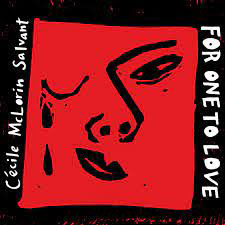 Playing Cecile McLorin Salvant’s latest, ‘For One To Love’ (Mac Avenue 2015) in 24/96 download form, produced music that was beautifully rendered, intimate, and unflinchingly honest. Recorded instruments sound astoundingly real thru the Wave 40’s and Salvant’s wildly expressive and dynamic voice growls with a fearlessness, few performers dare to muster. With every texture and gesture, her artistry leaps forth, the perfect material with which to judge these speakers. The first track ‘Fog’ comes across warm, with great body to the piano and a singer showing great form who clearly understands her instrument. As the second track ‘Growling Dan’ begins, it’s clear that Salvant is having fun here, as are the backing players. There’s a nice depth to the bass players work, a roundness to the cymbals and the stage depth of the image is quite full and satisfyingly realistic. A big thanks to Cecile for this one, I think it’ll be an award winner.
Playing Cecile McLorin Salvant’s latest, ‘For One To Love’ (Mac Avenue 2015) in 24/96 download form, produced music that was beautifully rendered, intimate, and unflinchingly honest. Recorded instruments sound astoundingly real thru the Wave 40’s and Salvant’s wildly expressive and dynamic voice growls with a fearlessness, few performers dare to muster. With every texture and gesture, her artistry leaps forth, the perfect material with which to judge these speakers. The first track ‘Fog’ comes across warm, with great body to the piano and a singer showing great form who clearly understands her instrument. As the second track ‘Growling Dan’ begins, it’s clear that Salvant is having fun here, as are the backing players. There’s a nice depth to the bass players work, a roundness to the cymbals and the stage depth of the image is quite full and satisfyingly realistic. A big thanks to Cecile for this one, I think it’ll be an award winner.
One of my favorite demo tracks, ‘Bring Me the Disco King,’ from David Bowies ‘Reality’ (SBME Special Mkts.2003) CD, presents a drum sound that is all skin and texture, with a very nice depth to the decay of each massive thump. It’s clearly being struck with a mallet. There’s great depth to the snare as well in this vocal, sparsely accompanied by piano and percussion.
When listening to any music thru the Wave 40’s, instruments have more body and nuance and the speakers seem to excel in presenting drums with a lot of air around each part of the kit. all very well defined. One senses a greater subtlety in micro-dynamics with added body to tall instruments, soundly rooted in image to the stage. There is an immediacy and power that pervades most music when played through the Wave 40’s. The musical event seems soundly more ‘there’ in the room with you.
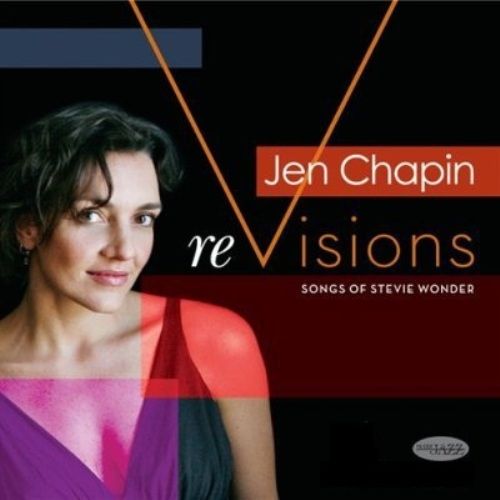 Jen Chapin’s version of Stevie Wonder’s “You Haven’t Done Nothin” from The Songs of Stevie Wonder (Chesky Records 2009) took both my wife and I by surprise. I was up near the speakers and she was nearly 20’ back into the loft when I started the track and we both reacted to the first percussive textures came out of the Wave 40’s, sounding as though someone was playing with drumsticks on the speakers themselves right in the room… it was that realistic. Even 20’ back in our space, the effect stunned Robin. There was a wonderful raspy textured sax, very live, with great body effortlessly inhabiting the space between the Wave 40’s that was quite thrilling. The tone wood in the Wave 40’s delivers dynamics and textures other speakers’ lack. One gets the sensation, after extended listening to the Wave 40’s, that they pull you into the very flow of the music. You relax into the music. Sadly, you’re often pulled out of this trance by things you’ve never heard before, jolted out of the flow of the music by these new sounds. Whether it’s the added textures in the drums or the punch of a plucked upright bass, the Wave 40’s present instruments with more body and what appears to be a wider dynamic range and greater realized image depth.
Jen Chapin’s version of Stevie Wonder’s “You Haven’t Done Nothin” from The Songs of Stevie Wonder (Chesky Records 2009) took both my wife and I by surprise. I was up near the speakers and she was nearly 20’ back into the loft when I started the track and we both reacted to the first percussive textures came out of the Wave 40’s, sounding as though someone was playing with drumsticks on the speakers themselves right in the room… it was that realistic. Even 20’ back in our space, the effect stunned Robin. There was a wonderful raspy textured sax, very live, with great body effortlessly inhabiting the space between the Wave 40’s that was quite thrilling. The tone wood in the Wave 40’s delivers dynamics and textures other speakers’ lack. One gets the sensation, after extended listening to the Wave 40’s, that they pull you into the very flow of the music. You relax into the music. Sadly, you’re often pulled out of this trance by things you’ve never heard before, jolted out of the flow of the music by these new sounds. Whether it’s the added textures in the drums or the punch of a plucked upright bass, the Wave 40’s present instruments with more body and what appears to be a wider dynamic range and greater realized image depth.
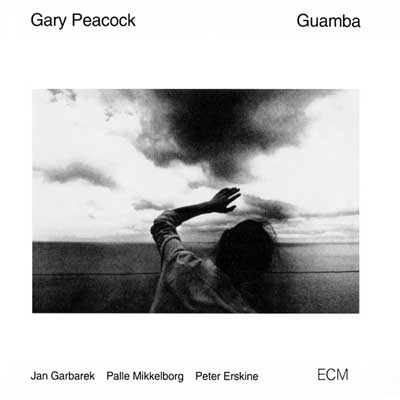 Gary Peacock’s “Guamba” (ECM 1987) is a project full of wonderful, inspective playing that I listened to for years on both vinyl and CD – it’s like a visit from an old friend that I know all too well. On the title track, Peacock’s bass is contemplative and his playing sure – his bass sounds like it’s right there with you. Through the Wave 40’s, his tone is more dimensional and there’s an added bounce to his delivery, It’s not so much the big things you notice – well, you do – but it’s the tiny things that come to ear, with a wondrous emphasis in micro dynamic detail.
Gary Peacock’s “Guamba” (ECM 1987) is a project full of wonderful, inspective playing that I listened to for years on both vinyl and CD – it’s like a visit from an old friend that I know all too well. On the title track, Peacock’s bass is contemplative and his playing sure – his bass sounds like it’s right there with you. Through the Wave 40’s, his tone is more dimensional and there’s an added bounce to his delivery, It’s not so much the big things you notice – well, you do – but it’s the tiny things that come to ear, with a wondrous emphasis in micro dynamic detail.
With ‘Tyme Time,’ the Wave 40’s delivers a rhythmic flow that gives a very live feel to the performance, with supreme dynamics and a sense of swing. Track 6, ‘Introending,’ pulled me from a quick chore back to the sweet spot with a propulsive intensity and insistent percussive power that was impossible to resist. Every thwack of a drum, every tap of a stick on a cymbal, proved hypnotic and sounded so immediate that I had to drop what I was doing and listen spellbound.
As a test, I connected the soundkaos Wave 40’s to my main rig, with it’s solid state 200wpc power amp using Synergistic Research Active Quad Alpha cables in place of the Tellurium Q Silver Diamonds. With the WTRP and a Audio Technica 440MLb cartridge as the source, I noted a rhythmic feel to the music played. I heard great depth in drums and an added dimension to the drum kit, most notably with the skin of the toms and an extended resolution in cymbal strikes. Chick Corea’s ‘The Vigil’ sounded quite live and forceful thru the 40’s, with good delineation in the instrumentation and dynamics a plenty, though things seemed a bit more aggressive and, while warm and dynamic, timing seemed a bit off compared the sound when using the Tellurium Q Silver Diamond speaker cables. The bass was presented somewhat body-less and lacking foundation. Cymbals sounded a touch splashy and pacing seemed a touch off and not as together… disjointed.
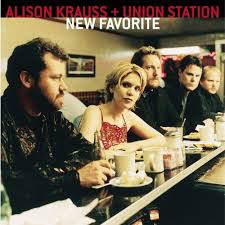 On ‘New Favorite’ (New Rounder 2010) record Allison Krauss’s voice provides a very good test, her voice often hard to reproduce without seeming glassy and etched. She sings quite high and presents better when she sings in a whispery delivery. True to form, Krauss sounded a bit brittle and a little aggressive. The musical content lacked the homogeneous feel as experienced thru my Opera Consonance tube integrated.
On ‘New Favorite’ (New Rounder 2010) record Allison Krauss’s voice provides a very good test, her voice often hard to reproduce without seeming glassy and etched. She sings quite high and presents better when she sings in a whispery delivery. True to form, Krauss sounded a bit brittle and a little aggressive. The musical content lacked the homogeneous feel as experienced thru my Opera Consonance tube integrated.
With the Tellurium Q Silver Diamond cables back on the Wave 40’s, I connected another test with another solid state amplifier, the Emerald Physics EP100.2SE. The quality of both rhythm and pacing returned and the music sounded warmer and seemed more together, with added resolution to low end imaging and greater depth to CD play. A replay of Krauss’s ‘New Favorite’ on CD yielded a warmth with a slight grit to her very high voice, but only when she really lets loose. When she sings in a restrained and whispery manner, you hear very nice body and presence.
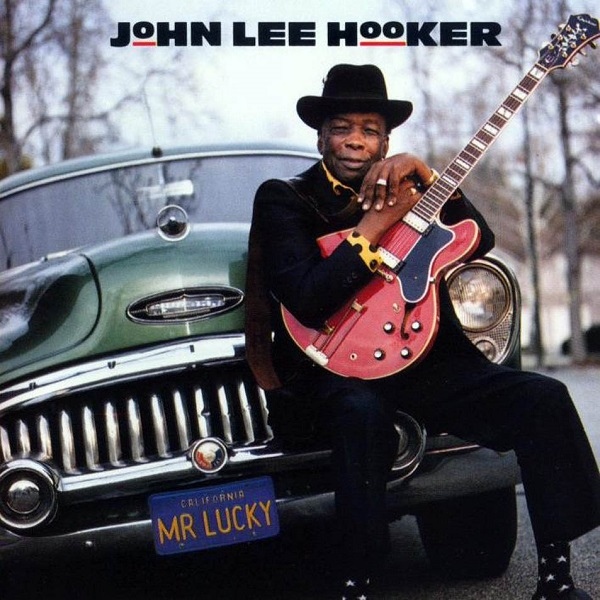 On “Mr. Lucky,” (Virgin Records 1992) John Lee Hooker is joined by Van Morrison for a languishing rendition of I Cover The Waterfront, masterfully delivered with wonderful vocals and an enveloping Hammond organ with it’s classic rotating speaker sound. The following track ‘Highway 13’ begins with an insistent rhythm that again pulled me back into the sweet spot after stood to turn up the volume. Captured here is great harmonica through a Green Bullet mic performance, such a Chi-Town sound, with every musical cue and moment adding to the drive and restrained intensity present in this great tune.
On “Mr. Lucky,” (Virgin Records 1992) John Lee Hooker is joined by Van Morrison for a languishing rendition of I Cover The Waterfront, masterfully delivered with wonderful vocals and an enveloping Hammond organ with it’s classic rotating speaker sound. The following track ‘Highway 13’ begins with an insistent rhythm that again pulled me back into the sweet spot after stood to turn up the volume. Captured here is great harmonica through a Green Bullet mic performance, such a Chi-Town sound, with every musical cue and moment adding to the drive and restrained intensity present in this great tune.
The Wrap Up
The wonderful soundkaos Wave 40’s are truly musical instruments. Their ability to freely rid themselves of internal energies and more freely project the music played through them adds a new dimension to the listening experience. The Wave 40’s deliver music with a drive and pacing that commands your attention. Perhaps that’s why you can pivot the speaker cabinets on the stands… to be able to hold them more like a guitar while they do their magic!
I enjoyed every bit of music I played through the Wave 40’s and desperately wish I had deeper pockets. From what I’ve experienced, I think the Tellurium Q Silver Diamond speaker cables are a great match with these fine, Swiss-made widebanders. If you are looking for speakers at this bold a price point, please do find the time to audition the Wave 40’s and Tellurium Q Silver Diamond speaker cables together. Both of these products will be on my best of 2015 list.


greg voth
Specifications:
Full range with super tweeter
Price: $20,000 per pair
> 8″ enviee full range driver
> Ribbon super tweeter for HF enhancement
> side exit hybrid TL / horn loading
> floating tone wood enclosure in solid spruce and hardwoods
> unique enclosure suspension largely decoupled from driver
> 94dB sensitivity
> enclosure size w340 x h800 x d280 mm
> over all foot print w420 x h1160 x d360 mm
> weight each 20 kg including stand
Website: www.soundkaos.com
Stereo Times Masthead
Publisher/Founder
Clement Perry
Editor
Dave Thomas
Senior Editors
Frank Alles, Mike Girardi, Russell Lichter, Terry London, Moreno Mitchell, Paul Szabady, Bill Wells, Mike Wright, and Stephen Yan,
Current Contributors
David Abramson, Tim Barrall, Dave Allison, Ron Cook, Lewis Dardick, John Hoffman, Dan Secula, Don Shaulis, Greg Simmons, Eric Teh, Greg Voth, Richard Willie, Ed Van Winkle, Rob Dockery, Richard Doran, and Daveed Turek
Site Management Clement Perry
Ad Designer: Martin Perry





Be the first to comment on: Soundkaos 40 loudspeakers